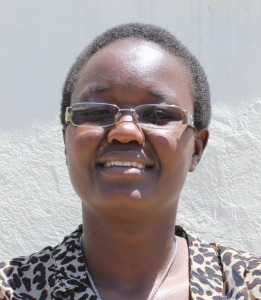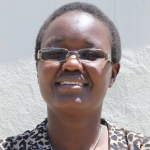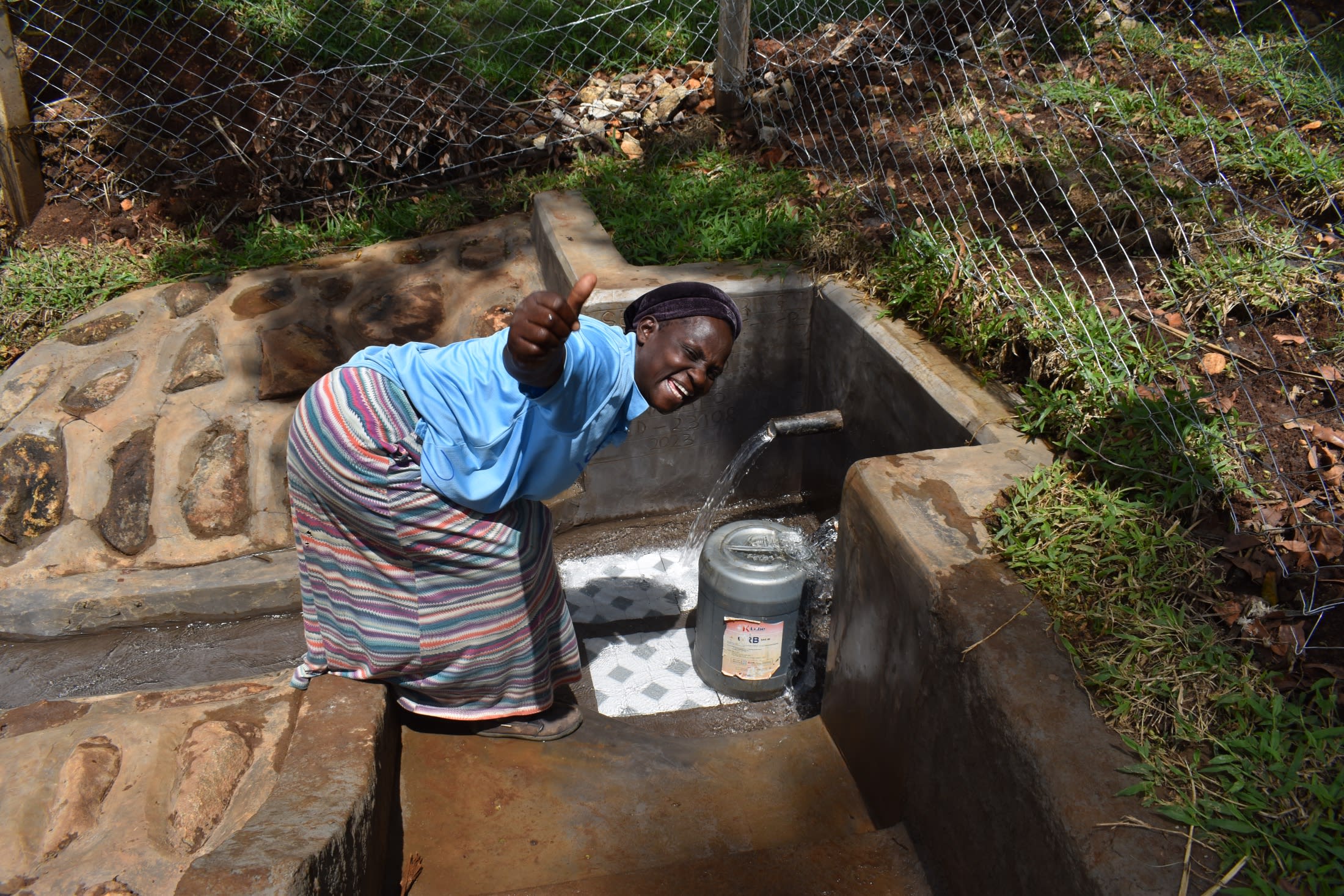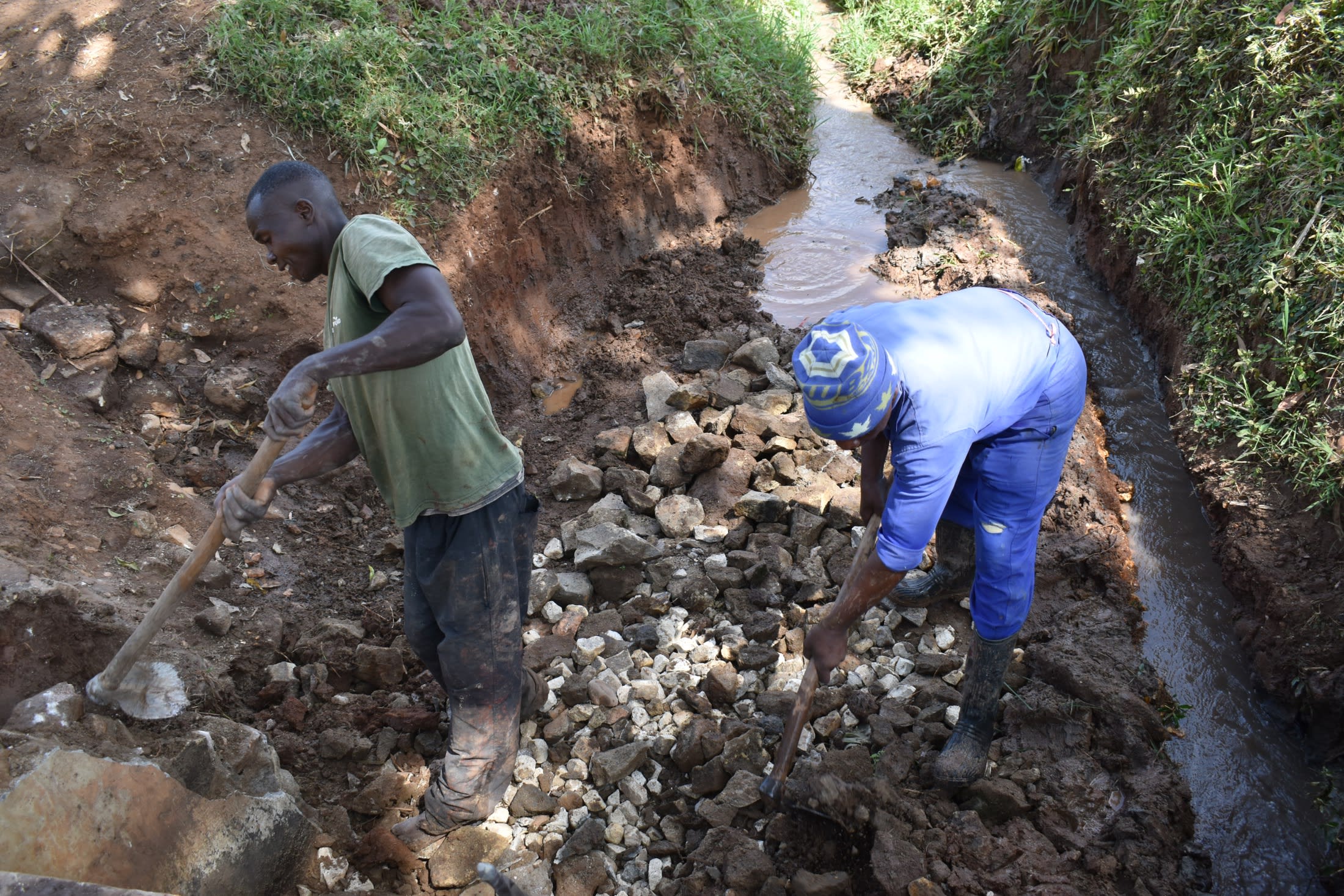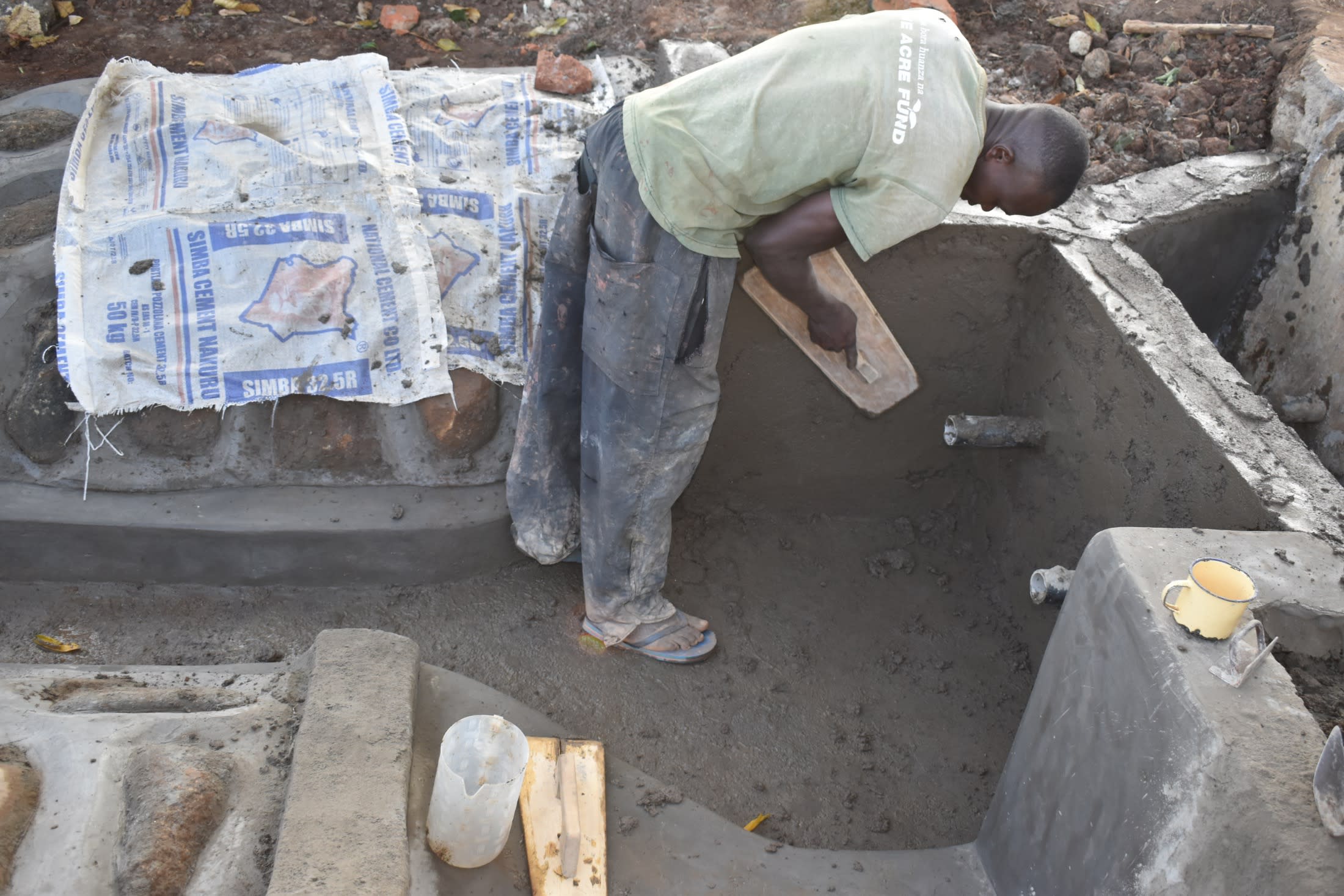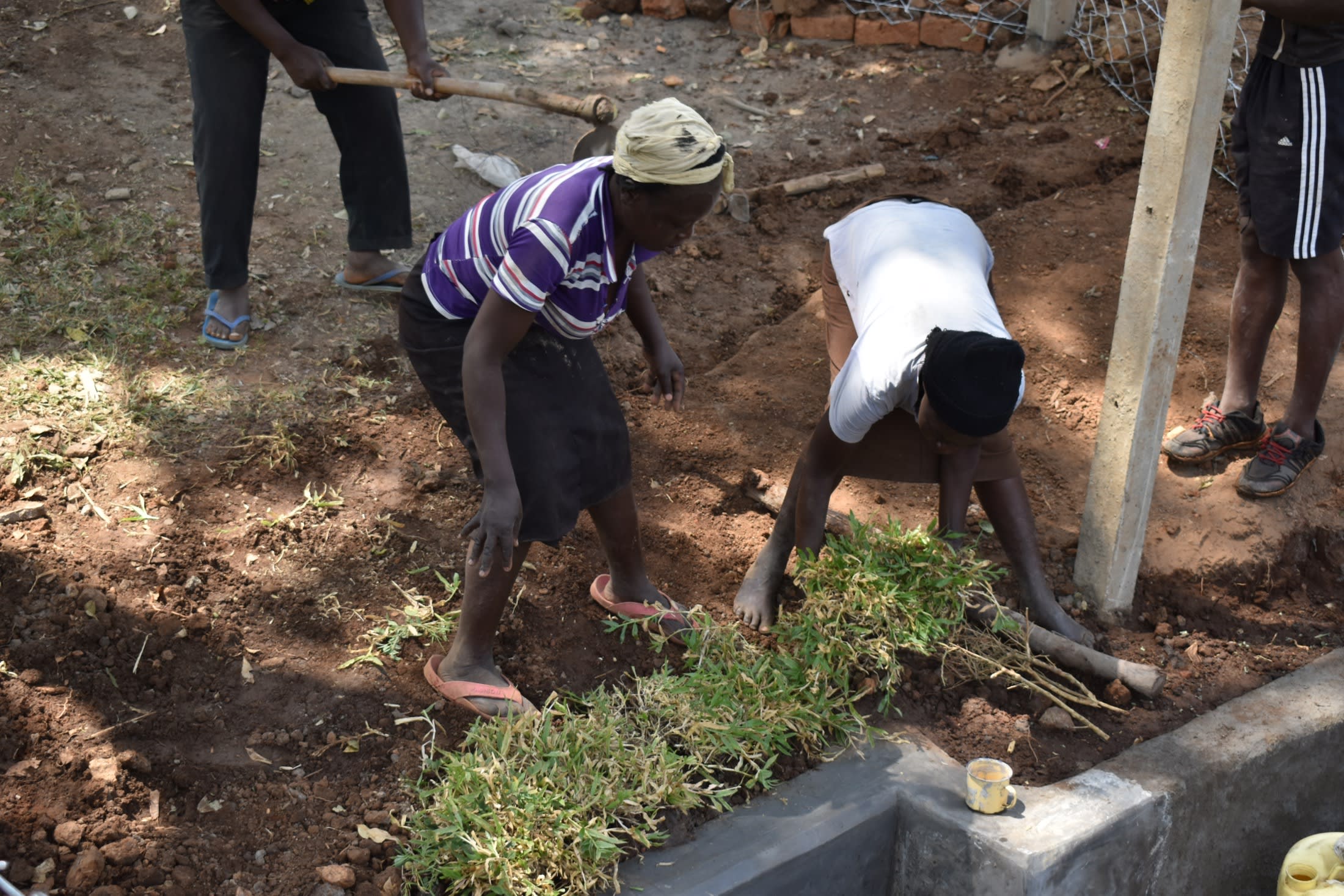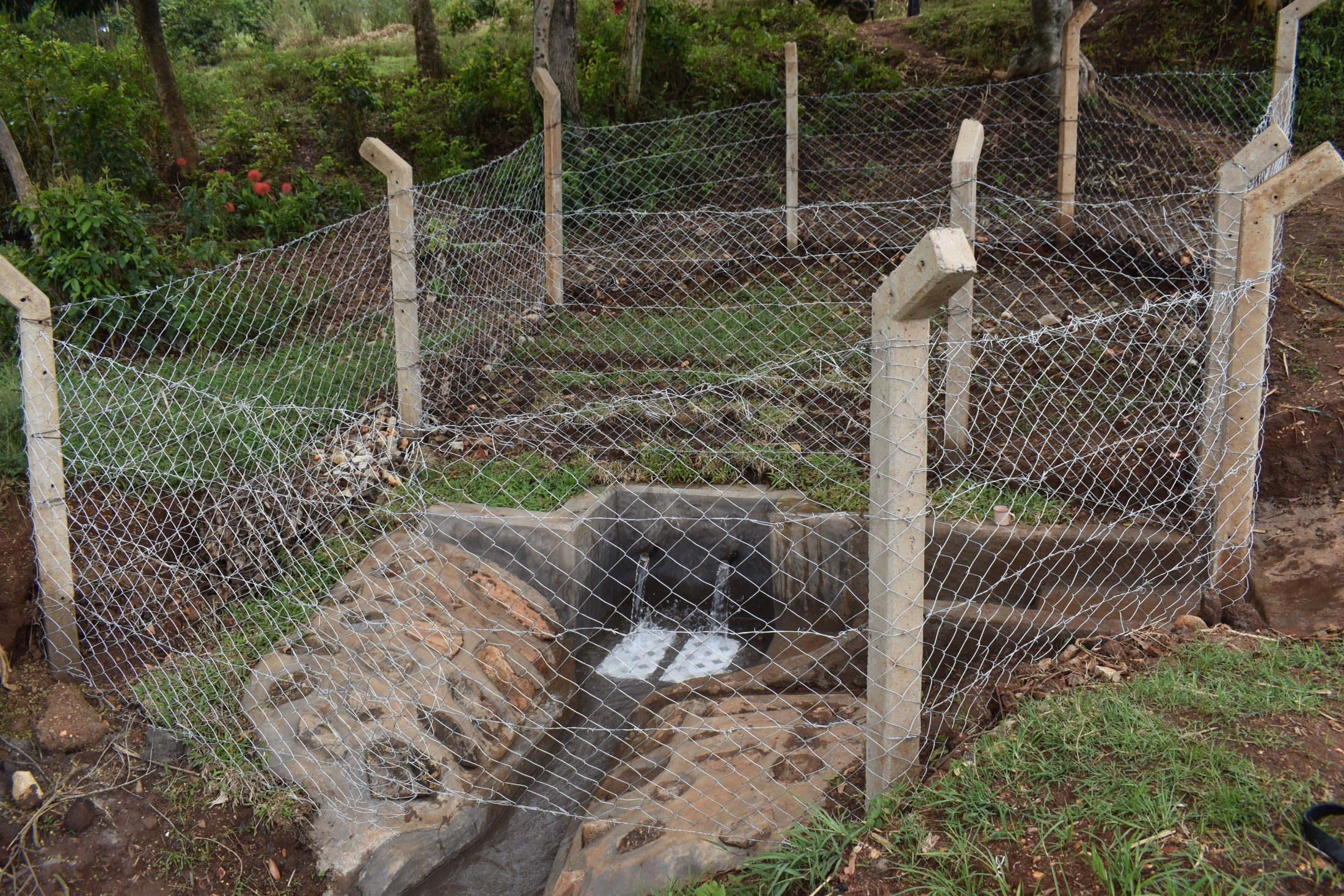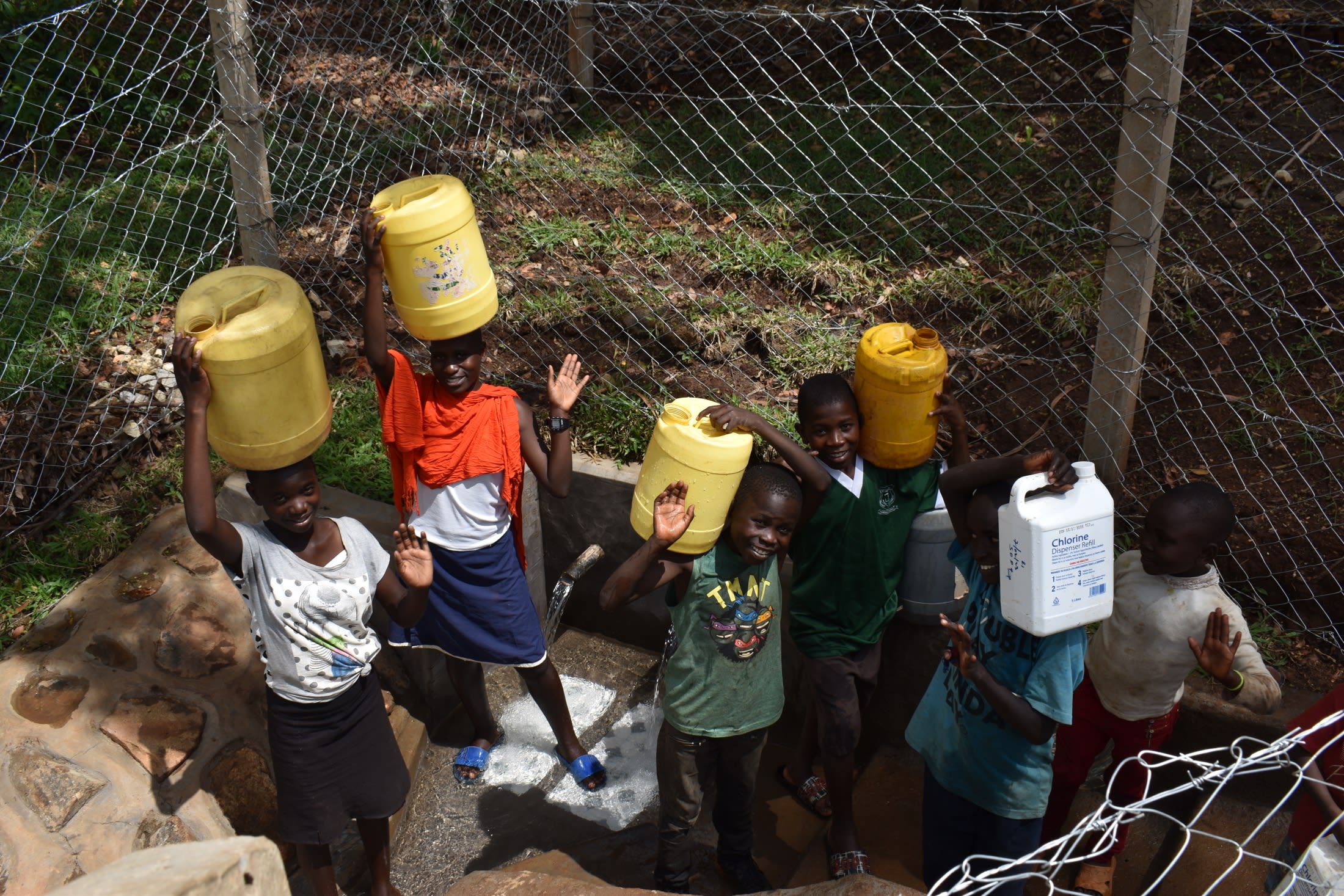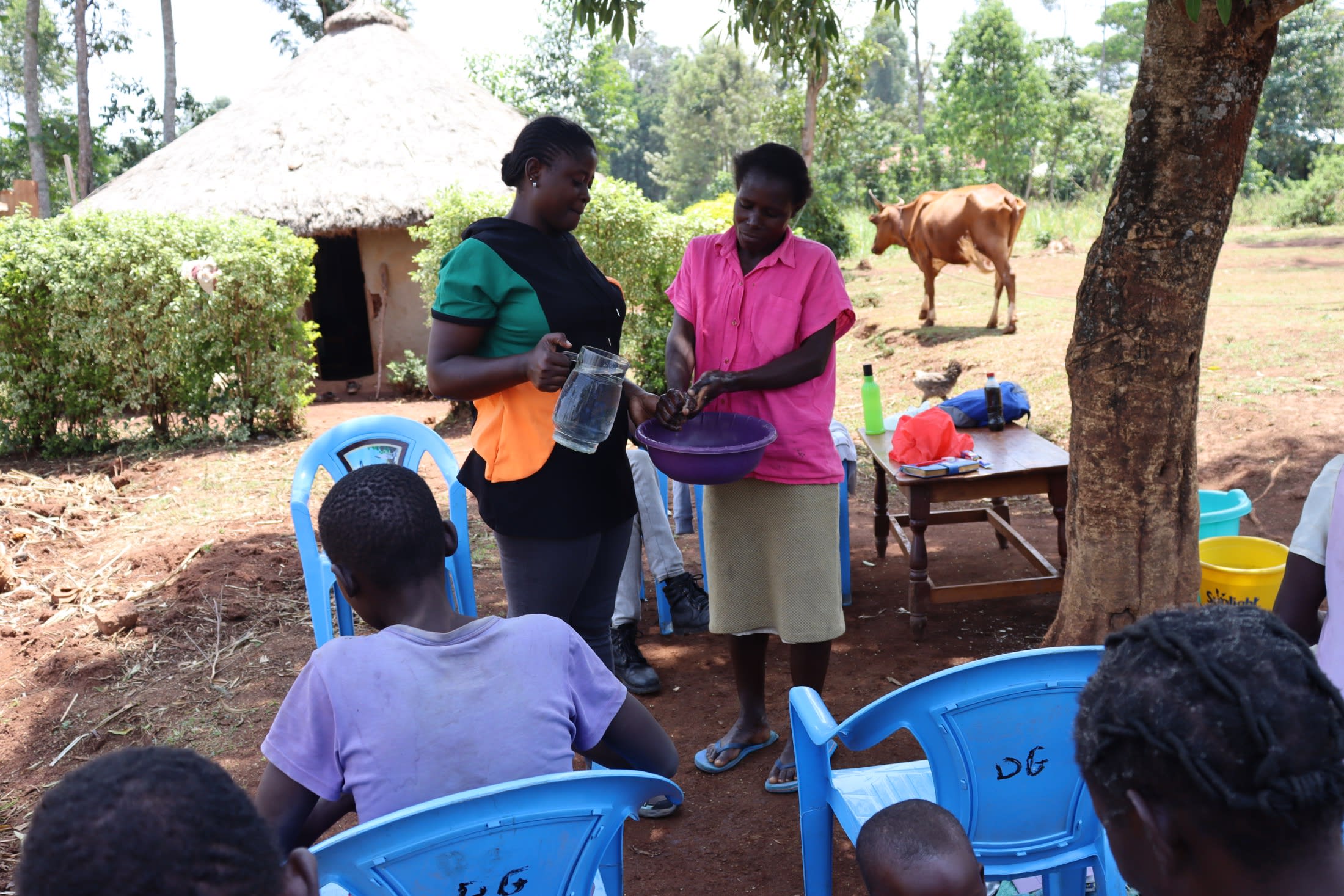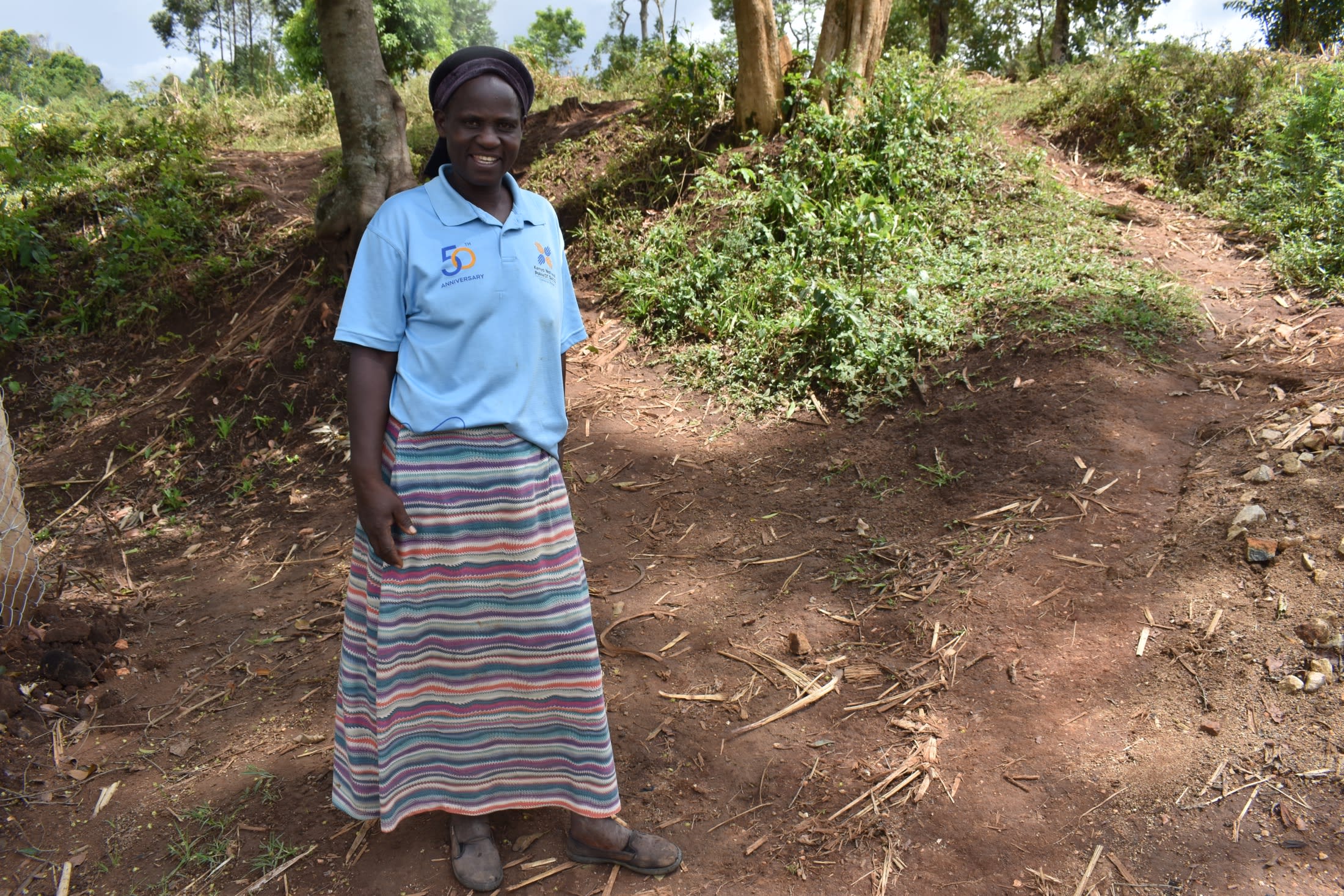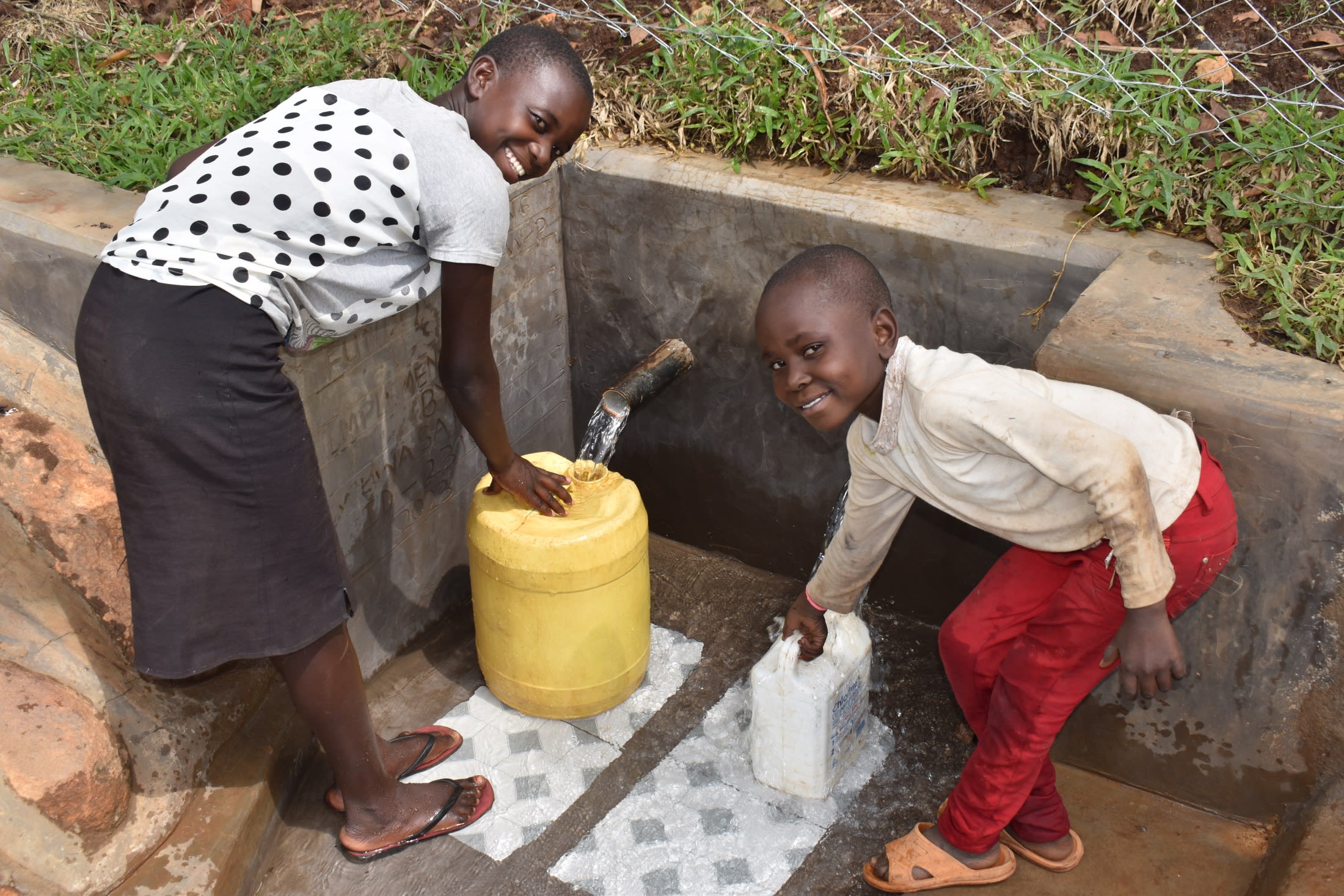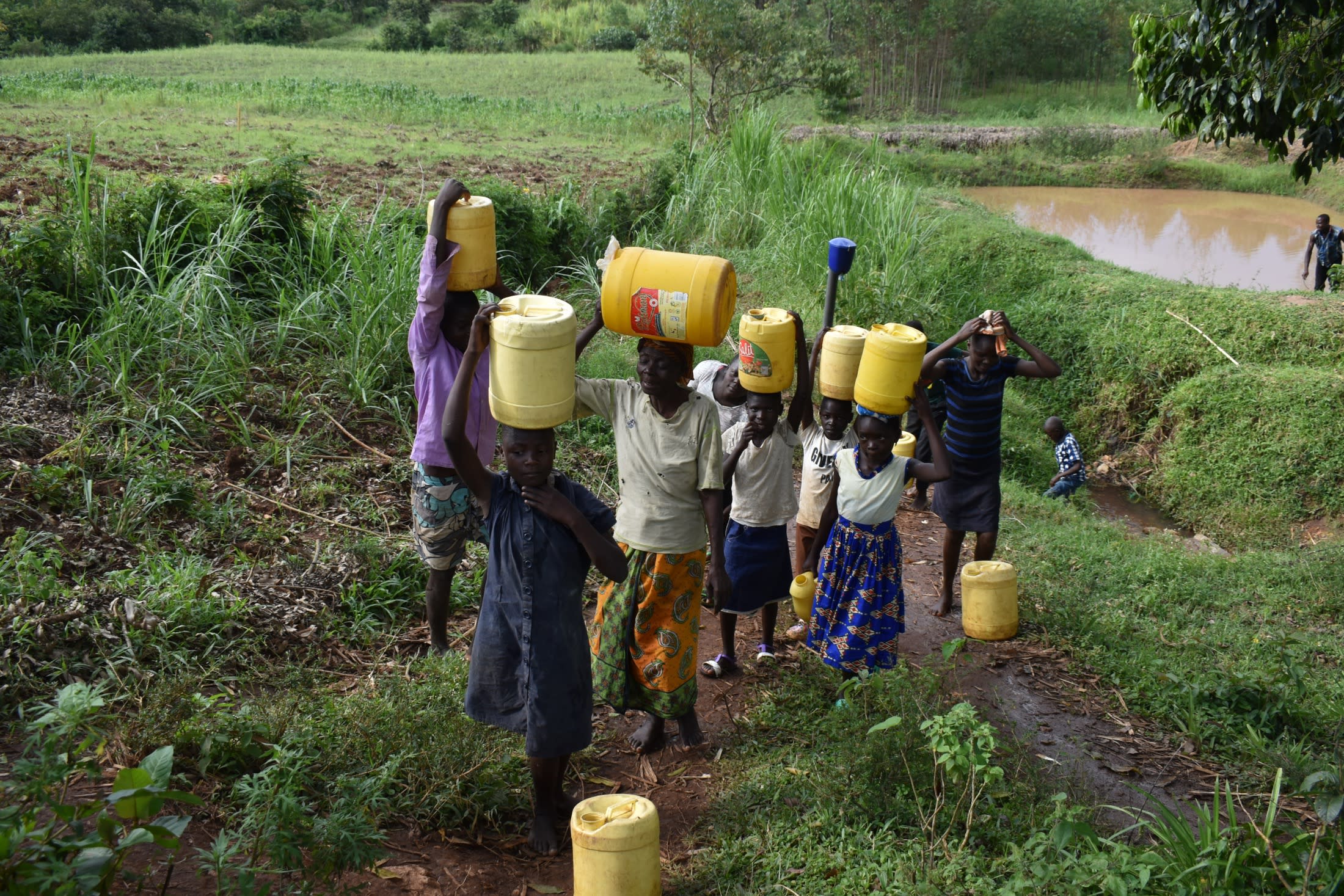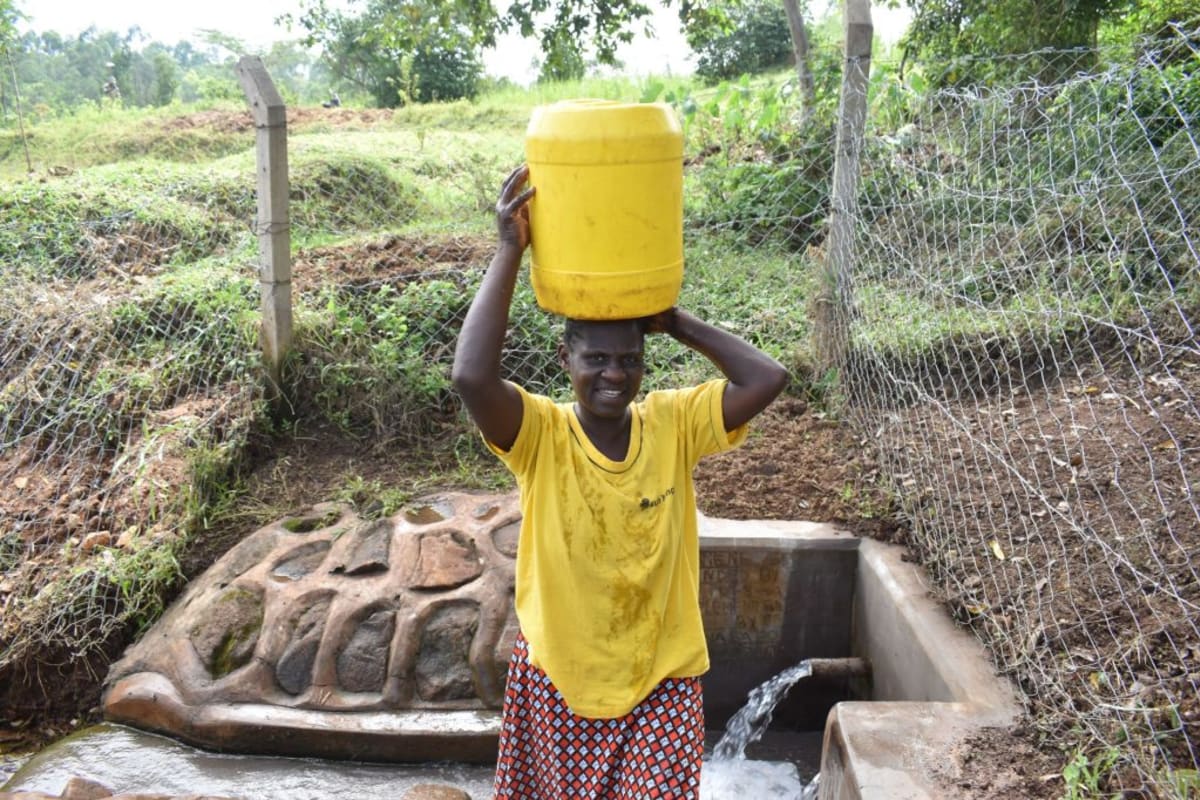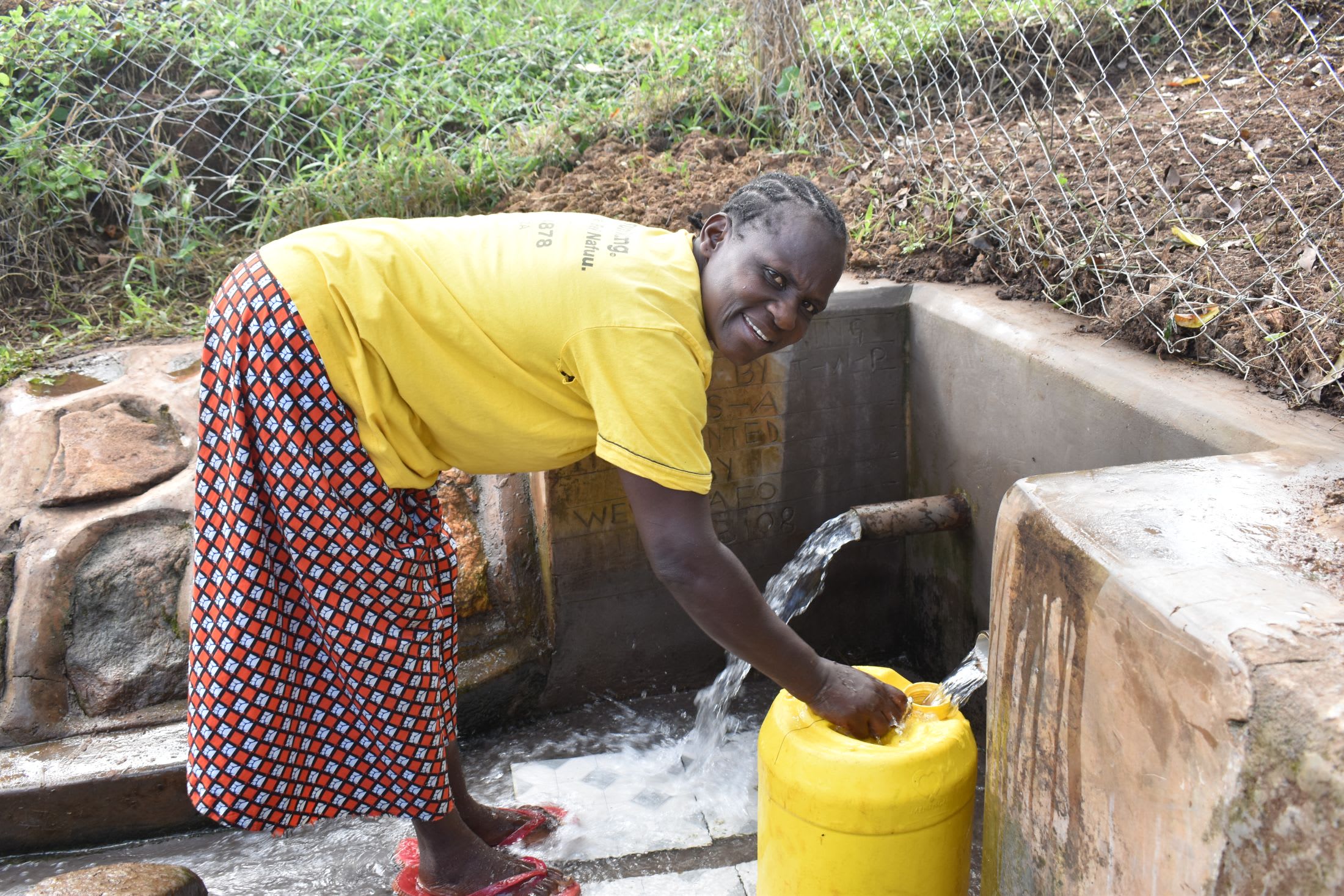Mayuge's 240 community members rely on Senene Spring for their daily water needs, but the water point is in disrepair and overcrowded, and people find collecting water there dangerous and risky to their health.
"Having water is a blessing to any human, but to us, it is like a punishment because it has not been a week since I got sick. I had sharp stomach pains and diarrhea. I visited [the] Mayuge dispensary, and I was diagnosed [with] typhoid and the doctor said that it is caused by drinking dirty water from the spring. Treating typhoid is very expensive, and this has affected one family member to the other. I believe protecting this water point will keep us healthy," said 55-year-old farmer Mrs. Difina Mwangala, shown below.

Complaints of water-related illnesses are common, especially cases of diarrhea and stomache ache during the rainy season, but ill health is not the only issue facing those who rely on the spring.
Spring protection was attempted years ago, but there are lingering issues from the inexpert craftsmanship.
"According to the community members, the spring structure shakes when a person walks near the spring box. Shaking means the wall is becoming weak, so they fear for their safety. This has forced them to protect the spring box area using thorns so that children do not play around the spring," said our field officer Olivia.
She continued: "Accessing the spring and carrying water from the spring is a nightmare because it is slippery and steep. The drawing point is also worn out, and according to our observation, the community tried to repair the drawing point, but they made it worse because the force of water from the pipe washed all the cement and left sharp small rocks." Olivia also shared that community members feel fearful after one person contracted tetanus when they got cut by one of the sharp stones at the drawing point.
"The fact [is] that we all need water, [and] this community values water too, but sometimes some of the community members do not fetch water on time because of overcrowding at the spring and the long queues that they experience daily. This has caused conflicts and fights among the water users because they all want to fetch water on time," said Olivia.
During the dry season, the spring is even more overcrowded, and sometimes, the queues last for hours.
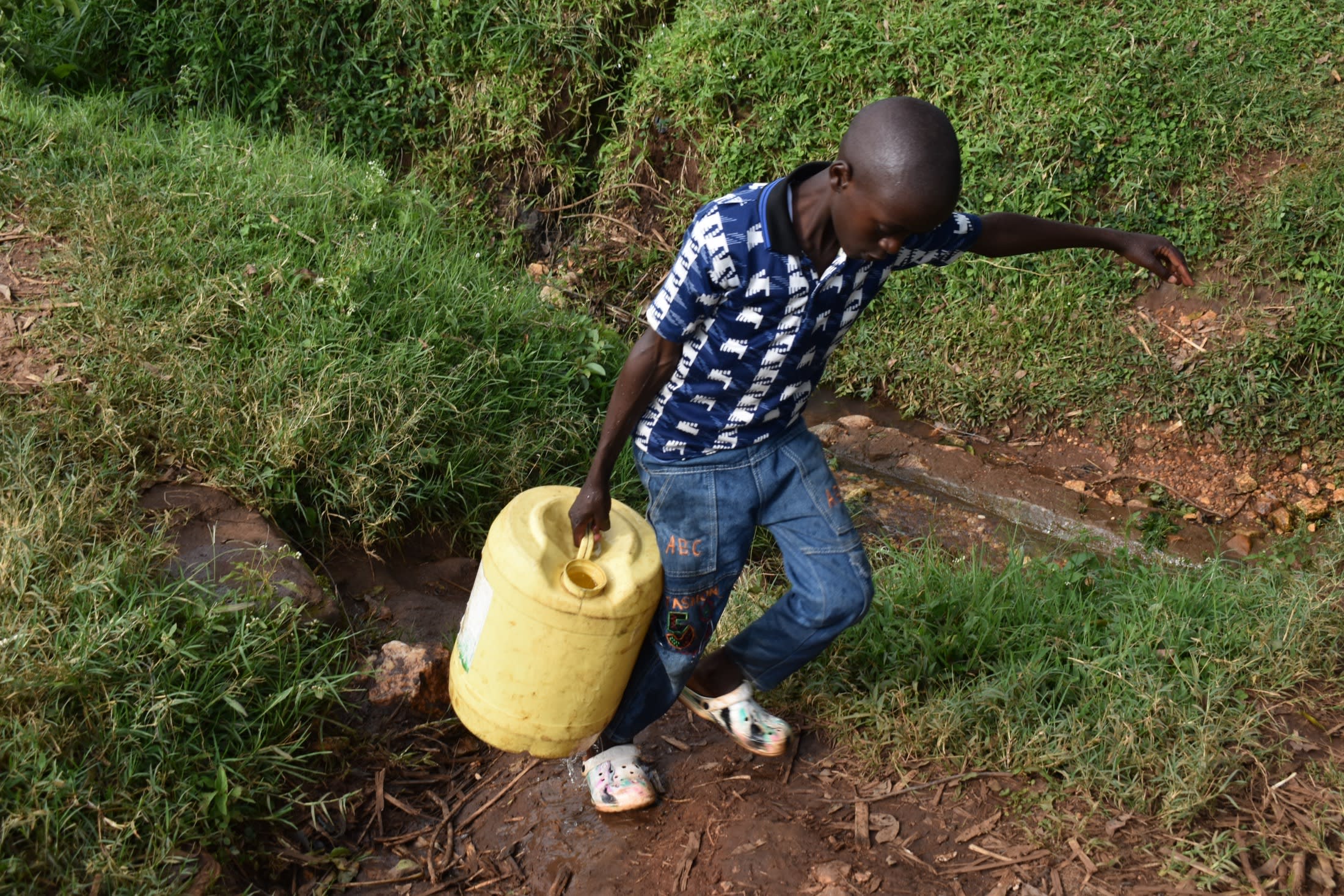
"The spring is overcrowded most of the time, and sometimes being as a child, it is believed I have to give the adults space to fetch water before I do. This has forced me not to do my homework because I have to queue for hours at the spring after school," said 11-year-old Rayhope O, shown above carrying water from the spring.
"Protecting this spring will enable community members to access water comfortably without fear of falling, breaking containers, and injuring themselves while fetching water. It will also bid goodbye to waterborne diseases, and the community will be healthy and happy," Olivia concluded.
What We Can Do:
Spring Protection
Protecting the spring will help provide access to cleaner and safer water and reduce the time people have to spend to fetch it. Construction will keep surface runoff and other contaminants out of the water. With the community’s high involvement in the process, there should be a good sense of responsibility and ownership for the new clean water source.
Fetching water is a task predominantly carried out by women and young girls. Protecting the spring and offering training and support will, therefore, help empower the female members of the community by freeing up more of their time and energy to engage and invest in income-generating activities and their education.
Training on Health, Hygiene and More
To hold training, we work closely with both community leaders and the local government to approve small groups to attend training. We ask community leaders to invite a select yet representative group of people to attend training who will then act as ambassadors to the rest of the community to share what they learn.
The training will focus on improved hygiene, health, and sanitation habits in this community. With the community’s input, we will identify key leverage points where they can alter their practices at the personal, household, and community levels to affect change. This training will help to ensure participants have the knowledge they need about healthy practices and their importance to make the most of their water point as soon as water is flowing.
Our team of facilitators will use a variety of methods to train community members. Some of these methods include participatory hygiene and sanitation transformation, asset-based community development, group discussions, handouts, and demonstrations at the spring.
One of the most important issues we plan to cover is the handling, storage, and treatment of water. Having a clean water source will be extremely helpful, but it is useless if water gets contaminated by the time it is consumed. We and the community strongly believe that all of these components will work together to improve living standards here, which will help to unlock the potential for these community members to live better, healthier lives.
We will then conduct a small series of follow-up trainings before transitioning to our regularly scheduled support visits throughout the year.
Training will result in the formation of a water user committee, elected by their peers, that will oversee the operations and maintenance of the spring. The committee will enforce proper behavior around the spring and delegate tasks that will help preserve the site, such as building a fence and digging proper drainage channels. The fence will keep out destructive animals and unwanted waste, and the drainage will keep the area’s mosquito population at a minimum.

 Protected Spring
Protected Spring
 Rehabilitation Project
Rehabilitation Project










